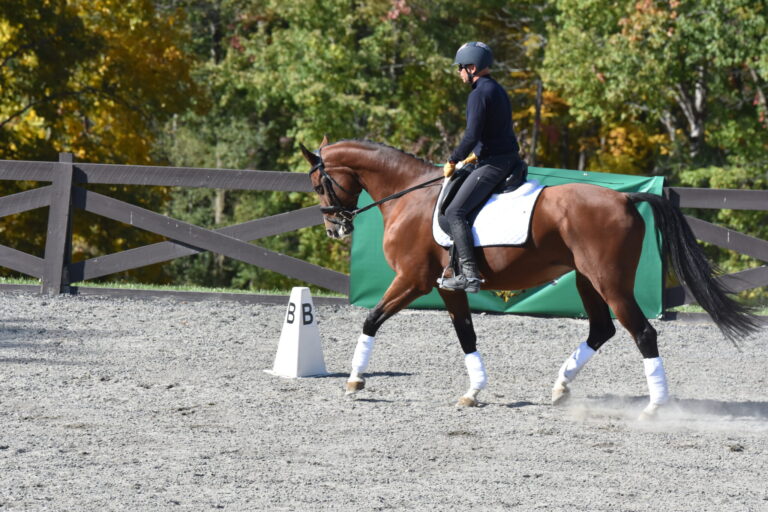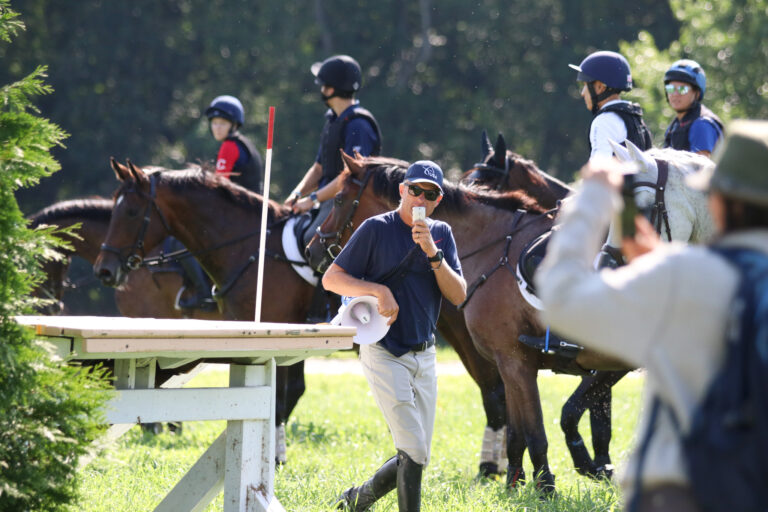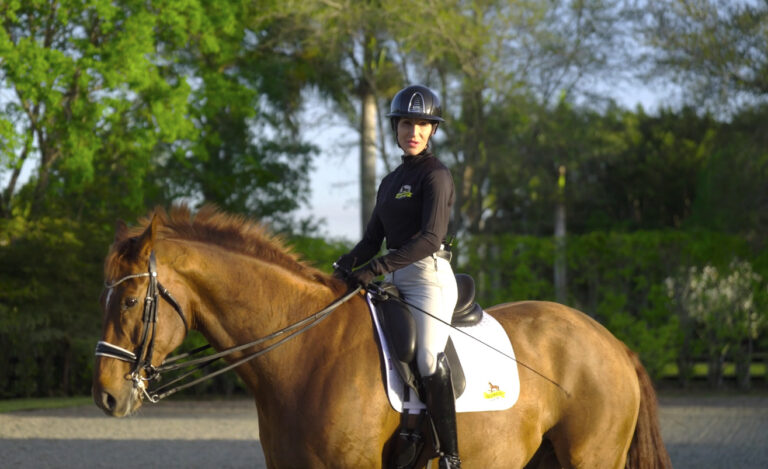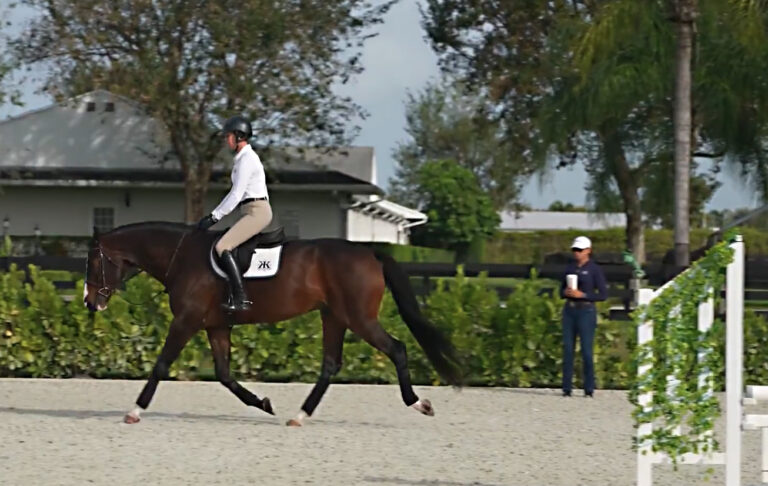I give clinics almost every weekend. It is a great job and keeps me in touch with the sport around the country. During these clinics, I try to hold question-and-answer sessions, so the participants and auditors can talk about issues that are on their minds.
Over the 40-plus years I’ve been doing this sort of thing, I’ve noticed I tend to get asked the same questions, so I thought I would make up my own list of frequently asked questions.

FAQ #1: How much conditioning is enough for my horse?
This is probably my most frequently asked question. I invariably answer, “That depends.” Each horse is different, and we need to know a little about the horse’s breeding and experience before we start giving definitive answers. For example, a “racetrack reject” Thoroughbred will need a lot less wind work than a horse who is half draft and half something else. However, there are general guidelines I use and a standard approach I recommend people use when conditioning.
I use what I call a “four-day rotation” when training eventers at the Novice, Training and early Preliminary levels. My sample schedule looks like this:
Day 1: Dressage
Day 2: Show Jumping
Day 3: Dressage
Day 4: Canter
Day 5: Repeat Day 1, and so on.
To describe the amount of work I want the horse to undergo, I use “interval notation.” If I want my horses to trot for a total of 15 minutes (say at 220 meters per minute, the required speed for Phases A and C at Classic events), and then slow canter a total of 12 minutes (at the required Training level cross-country speed of 400 m/m), with two-minute intervals of walk between each set of exercise, it looks like this (using ” for “minutes”):
5″ @ 220 m/m w/ 2″i +
4″ @ 400 m/m w/2″i
(My students’ slang for this workout is “3-4s,” referring to three four-minute sets of canter exercise. I usually maintain the same amount of trot work, regardless of the amount of canter exercise I am going to require.)
This is not the first work you should do, however, as you begin conditioning for another season. Your canter works should be progressive, beginning with very slow and short periods of exercise. I want you to gradually build your horse up to what I call “maintenance works.” Once you build him up to a certain level of exercise, I want you to maintain him only at this level of fitness. Getting your horse overfit will cause almost as many problems as having him not fit enough.
For Novice and Training levels, I want my horses to be maintained at 3-4s, Preliminary horses at 3-6s (three six-minute canter sets), and Intermediate and Advanced horses at 3-8s (three eight-minute canter sets). Remember, cross-country is an anaerobic exercise even at lower levels of competition. Cross-country competition will make your horse fitter as you go along. Be aware of this; later on in your season, look for an opportunity to occasionally skip a canter day so that you can do a little more work on your weakest technical skill (dressage or stadium jumping).
FAQ #2: When should I start putting studs in my horse’s shoes?
My smart-aleck answer is, “When do you want to stop slipping?” There are many different theories about how to put studs in your horse’s shoes, and my observation is that most of them work. My personal preference is to put four caulks of equal size in the front shoes. This will ensure that your horse’s foot remains level as it strikes the ground. For his hind feet, I like to have a slightly larger stud outside behind than inside. This allows his hind foot to pivot as he plants it, which will help prevent torsional injuries to the lower leg.
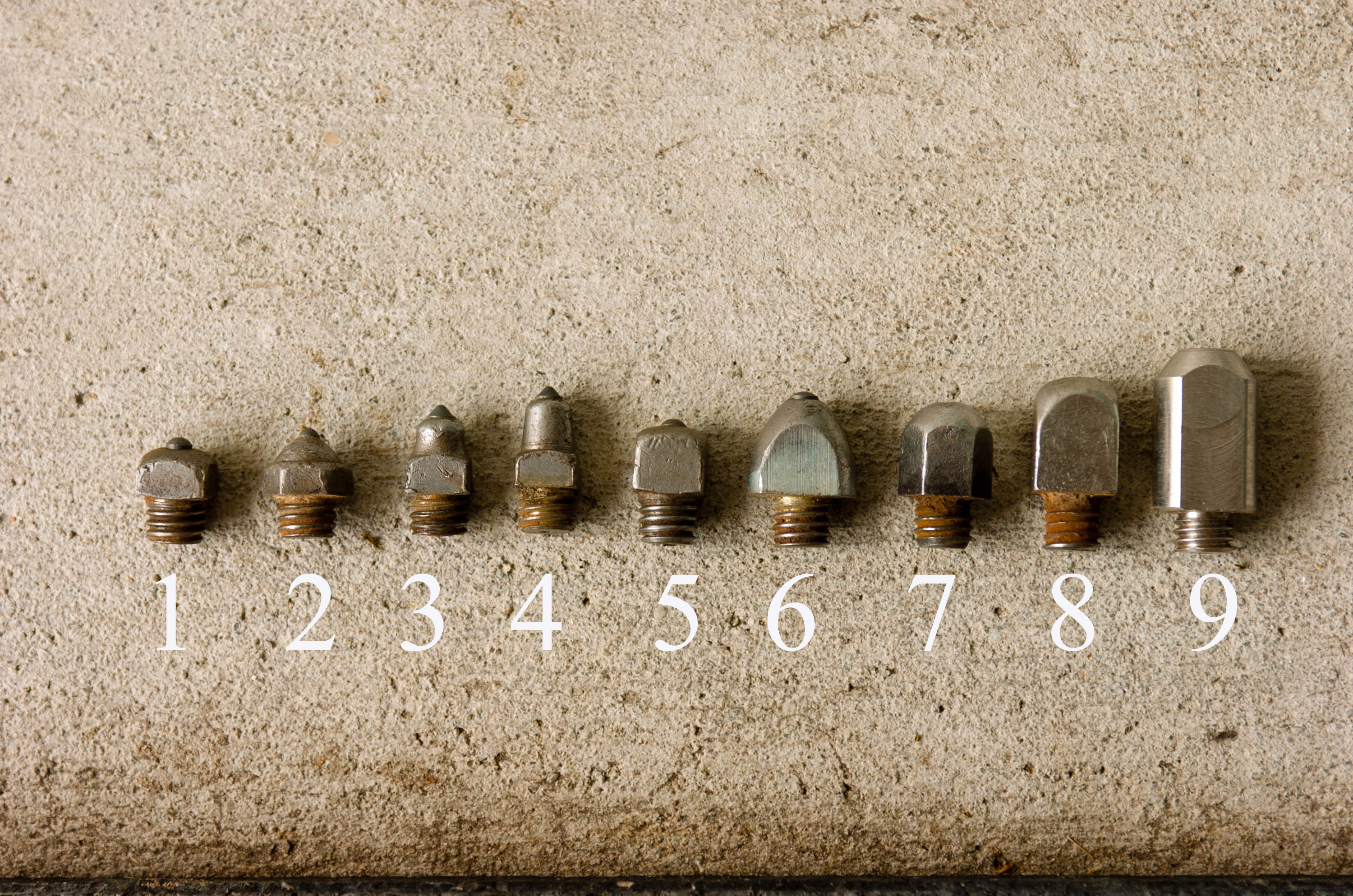
If we give our horses any sort of additional traction in questionable footing, they seem able to do the rest for us. My only additional comment is that when you can’t decide between “road studs” and “little bullets,” always go with the next largest size. I am sure I “overcaulked” a horse at some time in my career, but I do not know exactly when that happened. However, I can tell you to the day when I competed with not enough caulk and wound up sliding into a jump and injuring my horse. Learn from my mistake.
FAQ #3: How often should I jump my horse, and should I do gymnastics or course work?
Most of the riders I work with are still developing their skills, so they need regular jumping practice. I recommend that during the competitive season they jump according to the schedule I provided for the first FAQ above. I do not use gymnastics once my horses have started competing regularly because I want them to practice the skills they will need in the competition arena. Instead of using gymnastics, I recommend they practice in-and-outs, turns, various distances and shapes of jumps, and so on.
If the horse and rider consistently make a specific error that gymnastics would help (for example, rushing through a line of jumps and always knocking down the last element), then I will go back to a day’s gymnastic jumping instead of course work. I rarely school cross-country after my horses are competing regularly. However, I apply the same reasoning to horses with cross-country problems: If a horse has stopped going into the water at two events in a row, it is time for “Remedial Water 101.” I tend to do this remedial schooling on a day I have already scheduled for show-jumping practice.
FAQ #4: Do I need to use a stronger bit?
I always answer that the correctly trained horse should be able to compete in a plain snaffle and simple cavesson in all three disciplines. However, it takes a long time to train your horse correctly, and you have to live through the short-term to prove that I am right in the long-term.
Once we decide you need a sharper bit to compete safely, selecting the correct gadget bit becomes important (for me, any bit that is not a plain snaffle or a simple double bridle is a gadget bit). Horses pull and misbehave in three general ways: They lower their heads and pull down, they lock their jaws and pull straight ahead or they invert their necks and run away shaped like a banana. We need three different types of bits for these three different horses. When your horse lowers and lengthens his neck, he needs some type of gag bit to elevate and shorten his neck. If your horse doesn’t lower or raise his head, but “leans on the bridle,” then I suggest something thinner with a corrugated or double-jointed surface. Horses of this type usually react well to a thin Doctor Bristol, a slow twist or a cherry roller.
A horse who hollows his back and runs off with his neck inverted needs a bit with some form of curb chain. This restores his flexion and realigns his forehand in front of his hindquarters again. Many horses of this type react well to a rubber pelham with an adapter or a kimberwicke.
Finally, it is important to save the gadget for competition and continue training at home in a plain snaffle. There is a great temptation to practice in the gadget bit; however, when you train in a gadget bit, you get a false picture of your horse’s state of training.
FAQ #5: How do I know my horse and I are ready to move up a competitive level?
This is a tough question to answer, because so much depends on the horse’s and the rider’s backgrounds. If the horse and rider are not already educated to the next level, their risk factor will increase exponentially. I think people misunderstand the risk element of eventing. Risk in eventing does not automatically increase with the levels; risk increases as the knowledge and training curve flattens while the speed, size, and technicality of the obstacles (both cross-country and show jumping) increases.
Speaking of risk, let me tell you a little story. I am an amateur military historian, and one of my heroes is WWII Gen. Dwight D. (Ike) Eisenhower. When he was a very young second lieutenant, the commanding general at Fort Sam Houston in San Antonio, Texas, called him on the carpet. “Eisenhower,” the general said, “I hear you and some of my other junior officers are playing poker. I disapprove of my young officers playing games of chance.”
Eisenhower replied, “General, the way I play poker, it is not a game of chance.” He did not mean he was cheating to win; he meant that he had card sense–he knew the cards the other players had in their hands. His knowledge and skill changed the odds.
In the same way, a rider’s skill and knowledge can affect the risk factor of moving up a level. If I put Great Britain’s William Fox-Pitt on a talented young horse who has achieved four successful Preliminary completions, that’s one thing. If I put a nervous rider with no sense of timing on the same horse, that’s a horse of a different color. (Notice that I mainly consider the jumping disciplines when I try to decide if a horse and rider should move up. It may hurt our egos when we get a “4” for the shoulder-in, but no one I know of has died of that yet.)
Because jumping is where the risk is, we need to make sure both horse and rider are as mature and educated as possible in the jumping disciplines. Before you think of moving up, you need to be schooling consistently at the next level in all three disciplines. If you are moving from Novice to Training, for instance, you need to be consistently and successfully schooling 3-foot-3 in show jumping. You need to be comfortable schooling over Training level cross-country obstacles at the required competition speed, so that you do not panic or abruptly change your galloping rhythm in front of obstacles. (I do not mean to say I ignore dressage when considering whether to move up a horse and rider. Dressage is essential at every level, most especially as it relates to our ability to control and influence our horses while jumping.)
Organizers have started to make “move-up” decisions easier, because they are starting to offer hybrid divisions. It is an enormous help when I can enter a horse and rider for competition at, for example, Preliminary-level dressage and show jumping and Training-level cross-country. This can be a wonderful way to ease horses and riders into the next level. Study the (online) Omnibus carefully when you are thinking of making your entries at the next level, and talk to your local organizers. They may be receptive to including a “P-T” section at their next event.
This article originally appeared in the April 2011 issue of Practical Horseman.





